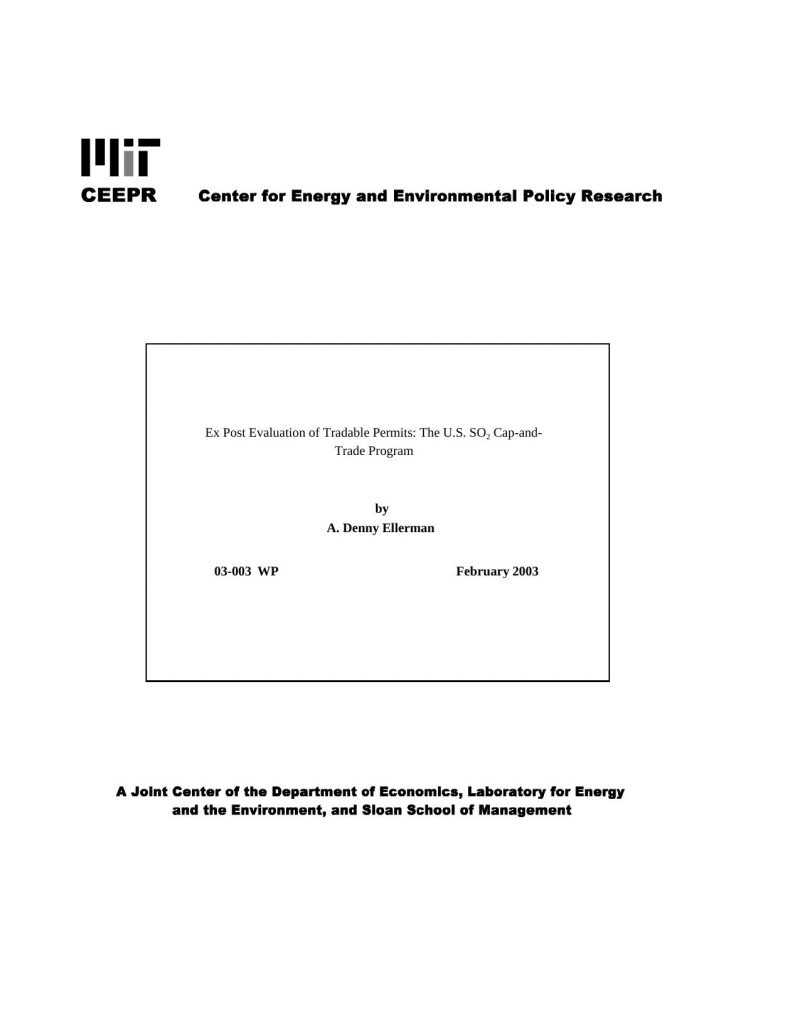Ex Post Evaluation of Tradable Permits: The U.S. SO2 Cap-and-Trade Program
A. Denny Ellerman
03-Jan
The U.S. SO2 cap-and-trade program was established as a result of the enactment of the 1990 Clean Air Act Amendments (1990 CAAA) under the authority granted by Title IV, which included several measures to reduce precursor emissions of acid deposition.2 The SO2 component consisted of a two-phase, cap-and-trade program for reducing SO2 emissions from fossil-fuel burning power plants located in the continental forty-eight states of the United States. During Phase I, lasting from 1995 through 1999, electric generating units larger than 100 MWe in generating capacity with an annual average emission rate in 1985 greater than 2.5 pounds of SO2 per million Btu of heat input in 1985 (hereafter, #SO2/mmBtu) were required to reduce emissions to a level that would be, on average, no greater than 2.5 #SO2/mmBtu. In Phase II, beginning in 2000 and continuing indefinitely, the program was expanded to include fossil-fuel electricity generating units greater than 25 MWe, or virtually all fossil-fuel power plants in the United States. Emissions from these affected units are limited, after accounting for any allowances banked from Phase I, to an annual cap of 8.9 million tons, or about half of total electric utility SO2 emissions in the early 1980s. The Phase II cap is equivalent to an Ex Post Evaluation: US SO2 Program 2 average emission rate of 1.2 #SO2/mmBtu, when divided by the mid-1980s level of heat input at fossil-fuel burning power plants.



